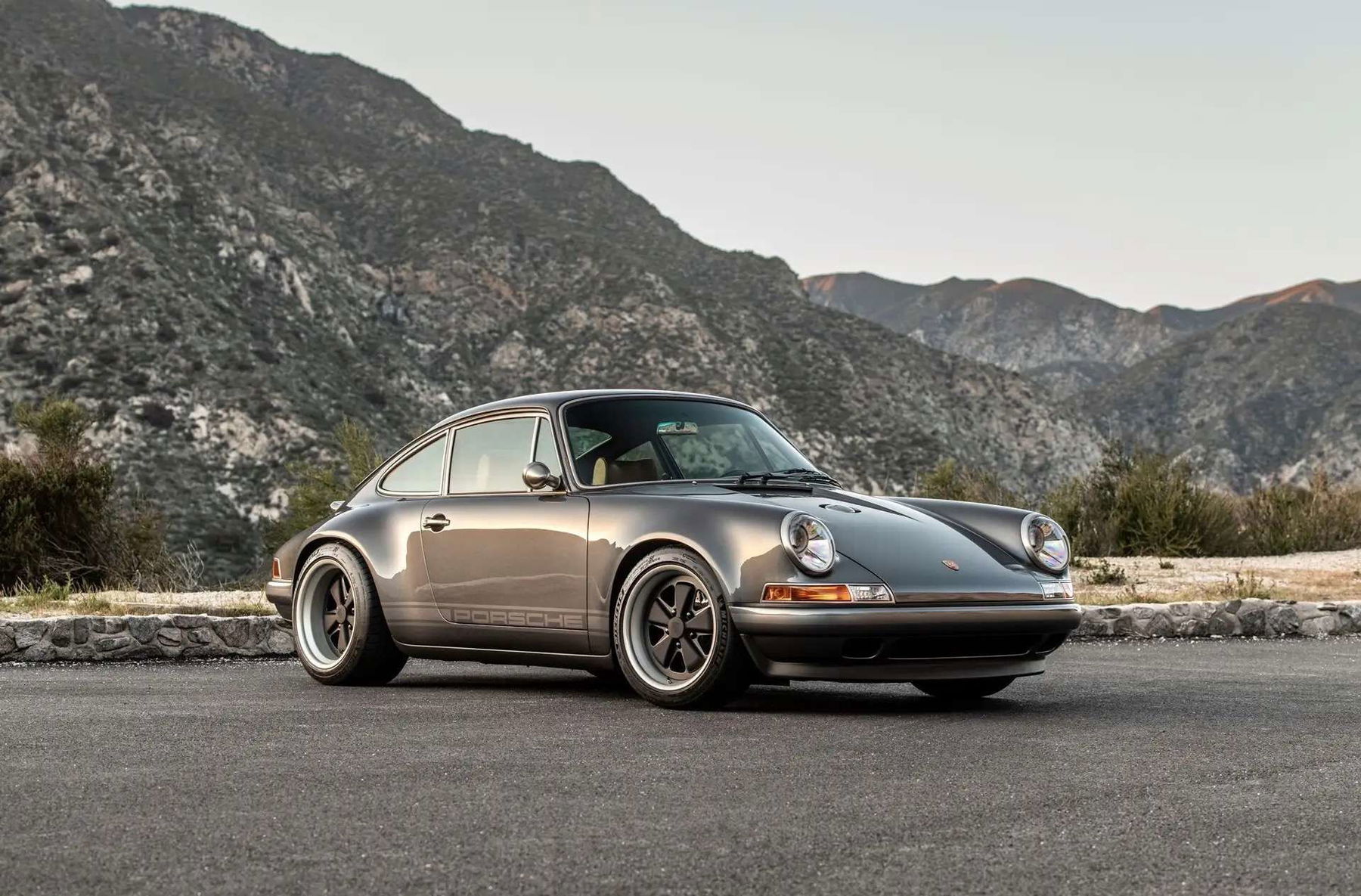Arguably the world’s most beloved sports car, Porsche’s 911 celebrates its 60th birthday this year. Capable of tackling everything from the daily commute to a podium finish at the 24 Hours of Le Mans, diehard Porschephiles argue that there is no challenge a 911 cannot overcome; it is a paragon of design and engineering.
Perhaps no company has celebrated the heritage of the air-cooled 911 with such obsessive attention to detail as California-based Singer.
Founded in Los Angeles in 2009, Singer has become globally renowned for bespoke restorations of Porsche 911 sports cars—each carried out on behalf of the car’s owner. Starting with a 964-generation car, the company painstakingly “reimagines” each example to create the equivalent of a “greatest hits” album of Porsche’s most iconic model. Singer’s restorations encapsulate “the delicacy of the ’63 original, the race-bred chic of the ’70s, the solidity of the ’80s, and the sophistication of the ‘90s…reimagined in a singular jewel-like car”.
Singer customers are able to restore either coupe or Targa body styles with rear- or four-wheel-drive transmissions and 3.6-, 3.8-, or 4.0-liter hand-built engines. Their car is disassembled, leaving the original chassis, which is cleaned, prepared, and strengthened before being fitted with carbon-fiber body panels, enabling significant weight reduction. From there, the sky is the limit for personalization.
Each 911 reimagined by Singer is a bespoke creation tailored to the tastes of each specific owner, and thus no two of the company’s fiercely personal commissions are the same.
The company’s quality, engineering, and attention-to-detail have made their restorations nothing short of legendary. Many notable Porsche collectors, racecar drivers, and Hollywood celebrities count themselves among Singer’s customers, and their fervent proselytizing has drummed up a wait list which stretches several years into the future.
Dubbed The “Lautrec Commission,” this Porsche 911 reimagined by Singer boasts a stunning and exceptionally well-considered specification. As with this car’s namesake—the famous French Impressionist painter Henri de Toulouse-Lautrec—the world will never see its equal. Ordered by the consignor in April 2019, this stunning car represents the results of Singer’s Classic Study restoration services, orders for which Singer capped at 450 examples in June 2022. With its Paint-to-Sample Magnetic Silver exterior, the Lautrec Commission represents an exceptionally well-chosen specification.
At the car’s heart lies Singer’s signature engine offering: their hand-built, 4.0-liter flat six-cylinder engine which produces 390 horsepower and 315 foot-pounds of torque. Executed for Singer by the noted Porsche specialists at Ed Pink Racing Engines of Van Nuys, California, this remarkable powerplant retains the 964-generation block, while utilizing bespoke pistons, cylinders and cylinder heads, crankshaft, camshafts, connecting rods, oil pump, throttle bodies, and intake systems. So equipped, the car reaches 60 mph from a standstill in less than 3.3 seconds, and 100 mph in just 8.2 seconds.
Better yet, the Lautrec Commission retains the purest powertrain configuration, sending power to the rear wheels via a five-speed G50-transmission. Thanks to the fitment of the optional high-performance brake package (with bespoke NATO Green-painted calipers), this reimagined 911 can decelerate just as quickly as it accelerates.
Inside, a pair of Recaro sport seats are trimmed in Singer’s signature elegant, hand-woven Cinnamon leather which extends through the cabin to the dashboard trim panel and door cards. The black anodized kick panels are nicely complemented by a matching pedal set, perforated black vinyl headliner, and black leather dashboard—all of which visually tie-in with the car’s Satin Black-finished Fuchs wheels. The transmission tunnel and interior doorsills are finished in square weave Oatmeal carpeting, while especially keen eyes will note the mahogany 917-style gearshift knob and classic-style gauge suite bearing Magnetic Silver dials anointed with cream markers—a bespoke touch which harkens back to the instrumentation found in 911s of the mid-1960s. The car also benefits from a modern air conditioning system and Singer’s premium Dynaudio sound system package with Audison amplifier. Finally, Toulouse-Lautrec’s monogram adorns the center of the steering wheel.
Very few cars restored by Singer have become available in the secondary market since the company’s inception. The Lautrec Commission presents an especially unrepeatable opportunity to skip Singer’s multi-year long waitlist and be driving a freshly restored example of the car upon which the company built their tremendous reputation—in a beautifully considered specification.































